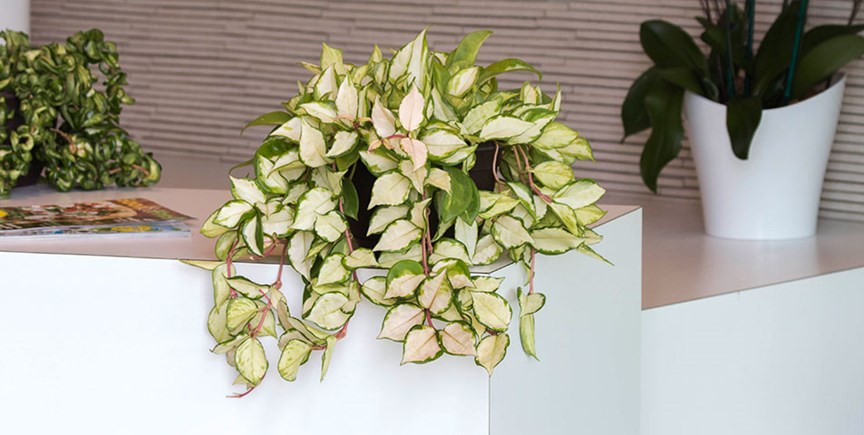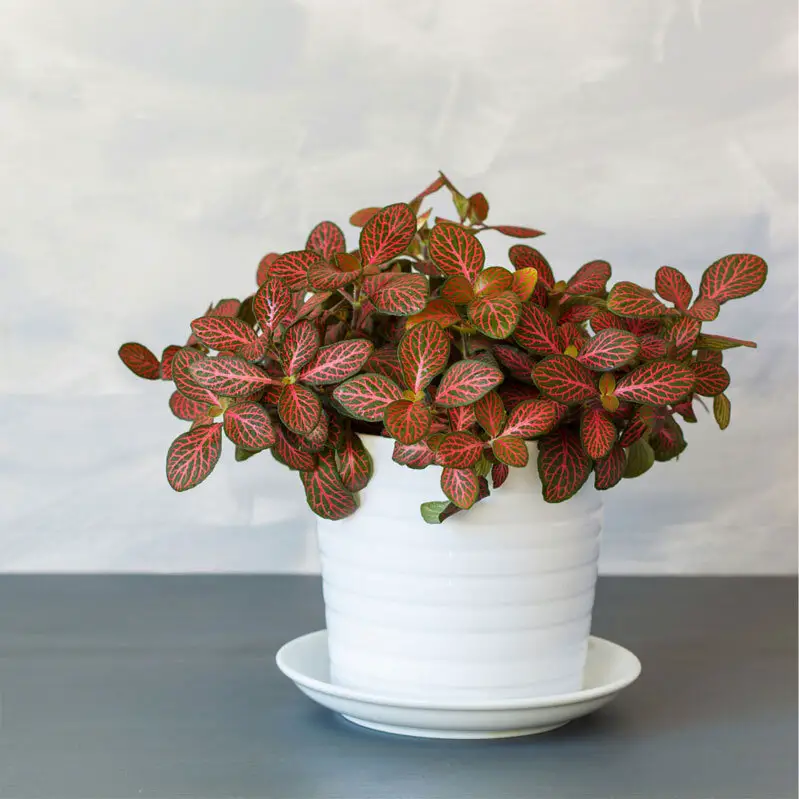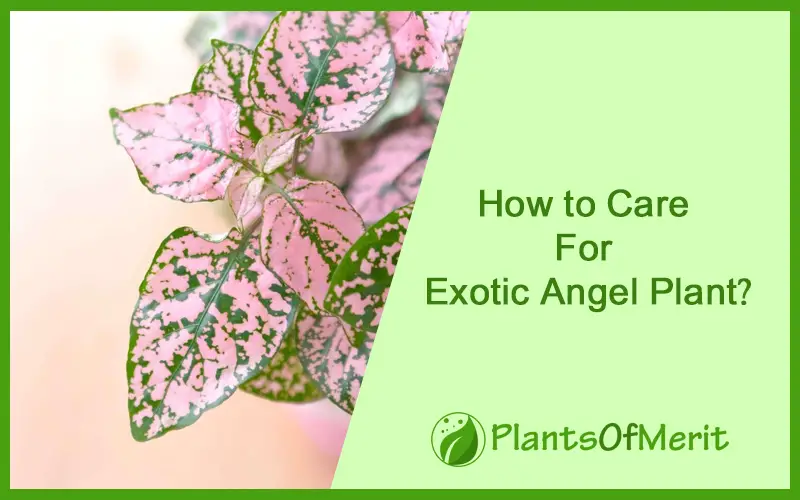Over the past 40+ years of their existence, Hermann Engelmann Greenhouses have come out with a very large variety of plants. They don’t just create plants, but they also create ‘brands’ and branded plants. Among one of their most successful and memorable of such offerings is the Exotic Angel Plant, which is one of their most popular and bestselling varieties. In this article, we shall take a closer look at how to care for exotic angel plant – and how to ensure the best possible growth?

These plants are called ‘Exotic Angels’ because they grow in a greenhouse called the Exotic Angel greenhouse, operated and owned by Costa Farms now. When we talk of an exotic angel plant, we don’t mean one specific variety of plant, but basically all the plants that come from this greenhouse. All these plants might belong to different lineages, but the common thread binding them is – they come from this particular greenhouse, and that they are great plants for indoor growers.
There are over 400 different types of plants that can be called an exotic angel plant, but the basic care and treatment that they need from the growers is pretty much the same. Over the course of this article, let us take a detailed look at the different methods via which you can ensure that proper care is given to your exotic angel plants and that they are thriving!
How to Care for Exotic Angel Plant:
Here are some things that you need to take care of while growing your exotic angel plants. Following these properly will ensure that your plants are growing well and without a problem. Once we are done with this section, we have listed out some common problems that Exotic Angel Plants tend to face – and how to resolve them as well.
Here, we cover some basics – such as providing the right light, water and soil, which ensures that your plants are growing just the way they are supposed to!
- Setting a Watering Schedule
All plants need water and a regular watering schedule, but the needs of an exotic angel plant are way higher! This plant needs extra care when it comes to its watering schedule. You need to ensure that you are providing just enough water that would dampen the soil and provide moisture to the plant, but you also need to make sure that you are not over-watering it and you don’t end up flooding the setup.
Young Exotic Angel Plants require more water compared to adult plants. Younger plants would need to be watered up to thrice a week, while mature plants can thrive on one or two times a week too. If you live in a place which is rather dry and hot, monitor the soil and in case if you find it dry, add a little water to it!
- Adjusting the Temperature
All Exotic Angel Plants tend to thrive in moderate temperatures. It should neither be too hot nor too cold. Something between 16 degrees to 22 degrees is ideal, with a variation of a couple of degrees here or there being just about fine. However, if the temperature drops below 10 degrees or above 32 degrees, you might need to bring in some temperature control or the plants might get damaged. Humidity is also important for these plants – we talk about it in detail in one of the pointers below.
- Providing the Right Light
After water and temperature, the next major thing that you need to take care of is the light that you provide to your Exotic Angel Plant. Much like any other plant, the Exotic Angel Plant also requires light to grow. However, it generally prefers indirect sunlight rather than having a direct exposure. This is particularly important to note during the flowering phase, as a prolonged exposure to the light of the sun can cause burn marks in the flowers. If you can provide partial sunlight to these plants, that would be the best for their long-term growth.
- Getting the Soil Right
The next factor that you need to consider is soil! There isn’t too much to keep in mind here though. Just make sure that the soil is moist but not too wet. The kind of soil that you choose needs to be one which allows water to drain out with ease. Something with a rich concentration of peat moss would work wonders. You might want to add some organic elements to feed your plants better. However, just making sure that you aren’t getting it too wet and that it drains enough is all you need to consider.
- Transferring Pots
So when your plant starts to grow in size and you are changing pots, the process here needs to be much more gradual than compared to many other similar plants. Exotic Angel Plants need time to adjust to new surroundings. Start by transplanting them to a slightly bigger pot when the roots and leaves start to grow bigger – and then eventually move it to a larger pot and then to a larger pot when needed. Don’t directly move from a small pot to a very large pot. This ensures that the plant is accelerating its growth in a regulated manner.
- Setting Correct Humidity Levels
We talked about humidity earlier when we were discussing the temperature that Exotic Angel Plants thrive in. Humidity is another key factor to consider. These plants LOVE humidity. An average household humidity rate is somewhere around 55%, and these plants are ok with that. However, if you crank it up a little to about 70% (or spray some water on it using a misting bottle), it will be great for the plant.
- Understanding the Need for Fertilizers
Some plants, such as the cannabis plant, are highly reliant on fertilizers and nutrients. The Exotic Angel Plant doesn’t really need too many of them, but adding fertilizers is going to give it a boost, particularly during the flowering phase, and ensures that the colors of the flowers come out really well. These plants need low NPK inputs and that too, just around the time of flowering. Do it on a weekly basis, right after you’re done watering.
5 Precautions While Growing an Exotic Angel Plant
Summing up from the set of guidelines that are to be followed while growing an Exotic Angel Plant, here are the five key things that all growers need to keep in mind when they grow this plant on their own.

1. Make Sure You’re Keeping it Safe From Direct Sunlight
Direct sunlight is one of the most common factors as to why houseplants (and particularly the Exotic Angel Plants) tend to get damaged. You might want to make sure that either you are providing only indirect lighting to your plants, or if you keep them in direct sunlight, you are putting them back in after a few short hours of light. These plants need a lot of caring for!
In case you provide too much or too little light, some signs will appear. Providing too little light will bring up dark spots, while providing too much sunlight can end up bleaching the plants! It needs the perfect balance.
2. Don’t Oversaturate the Plant with Water
The easiest and the fastest way to kill your plant is to provide it with excess water! We’re sure you do not want to do that, since you are on an article about how to care for Exotic Angel Plants, and not how to kill one!
Set up a watering schedule. When your plants are young, they need a higher water intake – hence watering the soil twice or thrice a week is acceptable. However, as the roots begin to grow, the plants need less and less water as the larger roots tend to store the water that you provide the soil. Post maturity, watering them just once a week would be just about fine. Excess water causes root rot, which Exotic Angel Plants are highly susceptible to.
3. Provide Fertilizers Once a Week During Flowering
Unlike some other plants, these Exotic Angel Plants do not require fertilizers at all stages. The only time you might want to provide them with mild NPK nutrients is during the flowering phase, right after you’ve provided water to the plants. This will make sure that you get vibrant flowers. However, even if you don’t do this, you will still get good flowers, this is just an additional support system for ‘pro’ growers who want to grow a specific type of flowers.
4. Watch Out for Pests!
Here’s something that we didn’t really include in the section above, but something that needs you to be alert. Make sure you are checking your plant for pests every now and then. Pests tend to leave a sticky residue or web-like structures on the plants. Sometimes they can also cause tiny holes or leave small black marks where they perform their feeding on the leaves. Spray them away with water, or use a pesticide if they persist.
5. Keep Away from Too Hot or Too Cold Temperatures
This one is pretty much a self explanatory note on its own, make sure you’re keeping your plants in a temperature which is neither too hot nor too cold. About 16 to 21 degrees Celsius is great for your plant, but don’t let it fall below 10 or above 32 degrees in any case – because that could damage your plant in just a matter of days. To add to that, a humidity between 50 to 75% is ideal for the Exotic Angel Plant.
Remember that an Exotic Angel Plant is actually quite a delicate plant and one that is prone to getting damaged upon the slightest of stress. Hence, it needs to be dealt with very carefully and growers need to be extra careful in terms of providing these plants with the right kind of conditions for growth. These are an indoor species of plants and they need to be dealt with in a very different manner when compared to outdoor plants.
What to Do In Case of Dark Spots or Yellow Leaves?
Dark spots or yellow leaves are extremely common while growing a houseplant, and especially when it comes to something like an Exotic Angel Plant. In case you start seeing that your leaves are yellowing, or brown-black spots are appearing on your leaves randomly, you might want to make sure of two things – you are not overwatering it, and that you are providing it with sufficient light. Sometimes, a third effect of one of these two problems could also be the stem going a little soft.
Reduce the water input of the plant, and try providing it a little more light, this should generally help with the spots/yellowing.
What to do if Leaves are Blackening?
One of the key reasons as to why any plant (and particularly the Exotic Angel Plant) would experience a blackening of their leaves is when it starts experiencing temperatures lower than what it would normally prefer. Provide the plant with some warmth around it and you shall see that either the blackened leaves will return to their original color, or that new leaves will no longer blacken.
What to do if my Exotic Angel Plant is getting Bleached?
Bleaching is a very common phenomenon in houseplants. In case any of your plants are facing a bleaching in their leaves, you might want to check the amount of light that you are providing them. Sometimes an excess of lighting can cause the leaves to appear washed out or bleached. You might also want to ensure that the light that you are providing them is indirect. Direct exposure to bright lights can cause damage to the Exotic Angel Plant.
What to do in case of Pest-Related Issues?
At first, try spraying your plant with soapy water or use something like a neem spray that generally has a good effect when it comes to eliminating pests and bugs. However, if none of that works, try getting a mild pesticide or an insecticide to ensure that the pests no longer remain on your plants. Some common signs of a pest infection are small dot-like holes (or dots) in the leaves, a sticky deposit on various places, and the appearance of webs (or other similar fiber-like structures)
FAQs
1. What is the right way to care for the Exotic Angel plant?
There are certain things you need to follow to care for exotic angel plants. This includes: watering the plants regularly, maintaining the right temperature, providing the right amount of light, adjusting the humidity levels, using fertilizers, and using the right soil. You must also transfer the plants to a bigger pot when the plants grow in size.
2. What is the right temperature for Exotic Angel plants?
Exotic Angel plants thrive in moderate temperatures. The ideal temperature is between 16 and 22 degrees. However, you are required to adjust the temperature levels from time to time. Failing to maintain the right temperature can damage your plants.
3. How to keep pests away from Exotic Angel plants?
To keep your plant free, you should use a mild pesticide or insecticide. This will remove the pests from your plants. Some of the best solutions are neem spray and soapy water. Just spray them lightly on the plants and it should eliminate the bugs and pests from your plants. Make sure not to use any harsh chemicals as they may damage your plants.
4. How to stop Exotic Angel plants from bleaching?
If you notice bleaching in your Exotic Angel plants, check if they are getting the right amount of light. Also, make sure that the light they are receiving is indirect. Exposing your plants to direct sunlight can damage the leaves.
5. Why do Exotic Angel plants get yellow or dark spots on their leaves?
Yellow or dark spots on the leaves of Exotic Angel plants are very common. It usually results from overwatering the plants. However, it might also happen if your plants are receiving less light. Another possible reason could be that the stem of your plants is getting soft.
6. Why Exotic Angel plants are called “Exotic?”
Exotic Angel plants are named ‘exotic’ because they are grown in the Exotic Angel greenhouse in the U.S. The greenhouse is owned and operated by Costa Farms. Exotic Angel plants are not the name of a specific variety of plants. Rather it refers to all the plants that are grown in that greenhouse.
7. What is the right soil for Exotic Angel plants?
Soil is an important factor when it comes to Exotic Angel plants. You need to make sure that the soil is mildly moist and rich in peat moss. To get better results, you should add some organic elements. Just make sure not to overwater your plants.
8. What is the ideal humidity level for Exotic Angel plants?
Generally, the humidity level in a household is around 55%, which is fine for plants. But if you can increase the moisture level up to 70%, then it would be best for your plants. You can do so by spraying some water on the plant.
9. Can Exotic Angel plants take direct sunlight?
Direct sunlight can damage your plants. This is why it is important to keep them away from direct sun rays. Only provide indirect light to your plants.
Conclusion
Summing up, we hope this article helped you gain a better insight into the world of Exotic Angel Plants! Do keep in mind that there are a large number of plants that are called an Exotic Angel Plant and this is not one fixed plant. However, these set of guidelines and instructions will help you take care for all these plants without much of a problem! Do let us know over the comments, or drop us a mail if you are facing any other problems, and we shall try to get that resolved for you as soon as we can!

